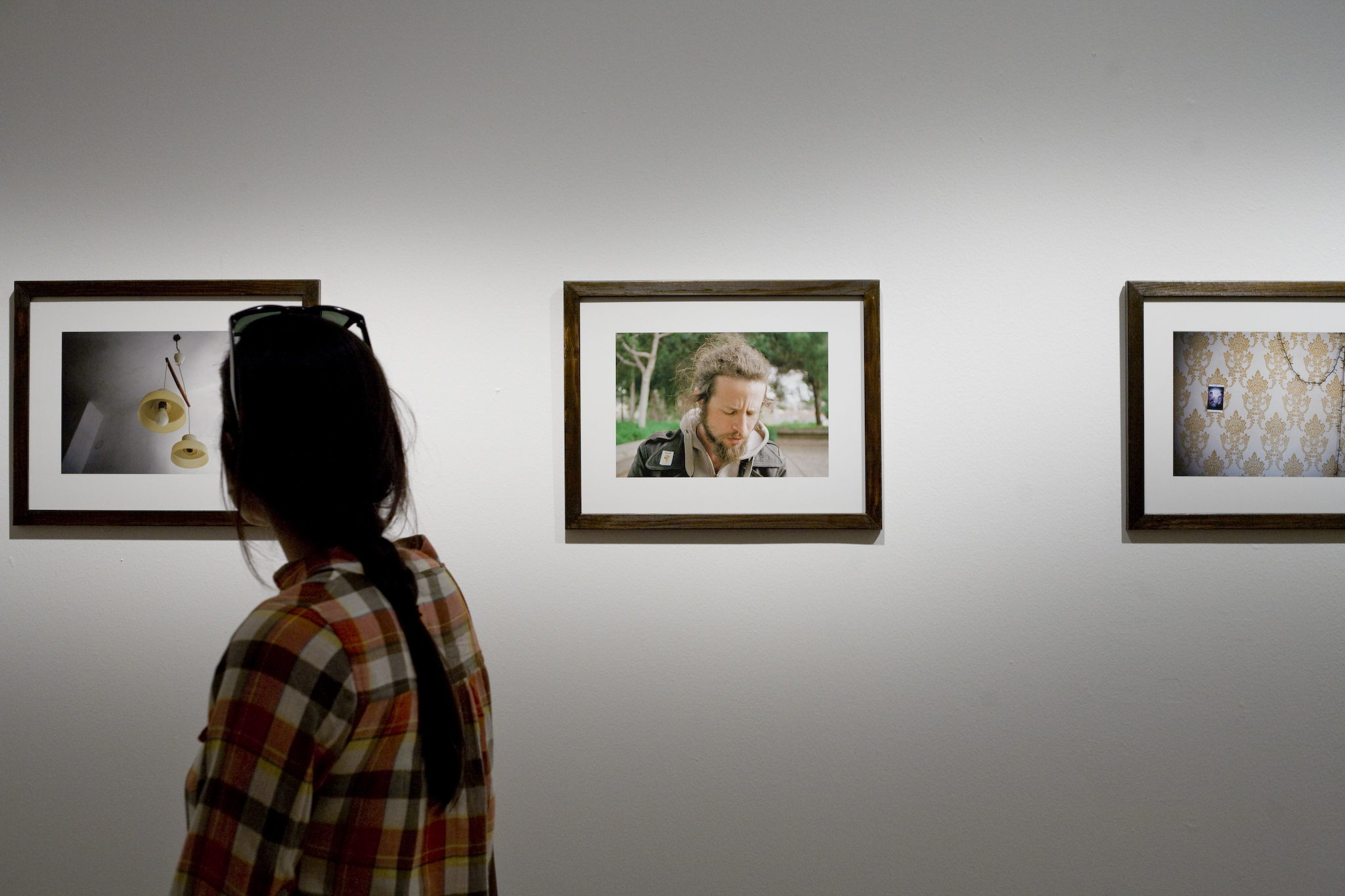Arm’s Length
Eldad Menuchin, Sivan Nisdelsky, Iris Pshedezki
23.12.2010 – 20.01.2011 CCA, Tel Aviv
“Make room for me“
12.12.09
22:43
Sent by: 0528576439
“I’ll make you tea as well“
12.12.09
22:44
Sent by: 0505748557
“Arm’s length” is an exhibition that is based on the hope of creating a meeting point between art and its spectator. For this, one must create a space: for the pieces, to be present within, and for the spectator, to enter.
Art is created as part of life, but, curiously, is not always experienced as such. There is a kind of loss of faith that turns into distance, manifested in either boredom or sanctification, that prevents a level gaze. The psychoanalyst D.W. Winnicott wrote “When I look I am seen, so I exist. I can now afford to look and see. I now look creatively and what I apperceive I also perceive.”[1] This sentence was etched into my memory. The simplicity with which he presents the possibility of connections, this despite the fact that the possibility of being seen is not to be taken for granted. Winnicott refers to the relationship between the infant and mother in the ‘mirror-stage’ developmental phase. I draw on this to reflect on interactions in general, such as that text message, “make room for me” which does not refer to a physical space, but rather, the need to be felt, to touch and to be reflected by another. The same longing is expressed in a gallery space: for the artist, and for his spectator. It was for this reason that I wished that the exhibition’s point of departure would be related to the awareness of the other. I have found that photography is a medium which is built upon that which is reflected within the lens, allowing for a very special kind of observation. There is always something before the camera, something which may elicit a response.
As in a fantasy, the hand, outstretched towards the mirror, discovers that it can cross over, “arm’s length” is an exhibition that seeks the possibility to touch, to feel something new, while focusing on a confrontation of the distance between us and that which is outside of us. This distance is one that we often guard jealously, seek refuge within, while sometimes preserved for us by default, even if we try to venture beyond its borders.
The three artists presenting in the exhibition confront their surroundings, stand before them, and succeed in translating their crisis of faith into a work of art. They carve out a space for themselves, and that specific tone is echoed before the concreteness of reality. Where we fall short, the camera is an external tool, but the creative gaze is experienced from within, like breathing. If the breath, exhaled, is then inhaled by the spectator, art has succeeded in overcoming the gap.
[1] D.W. Winnicott. Playing and Reality. Tavistock/Routledge, London and New York, 1971. pp.114.
